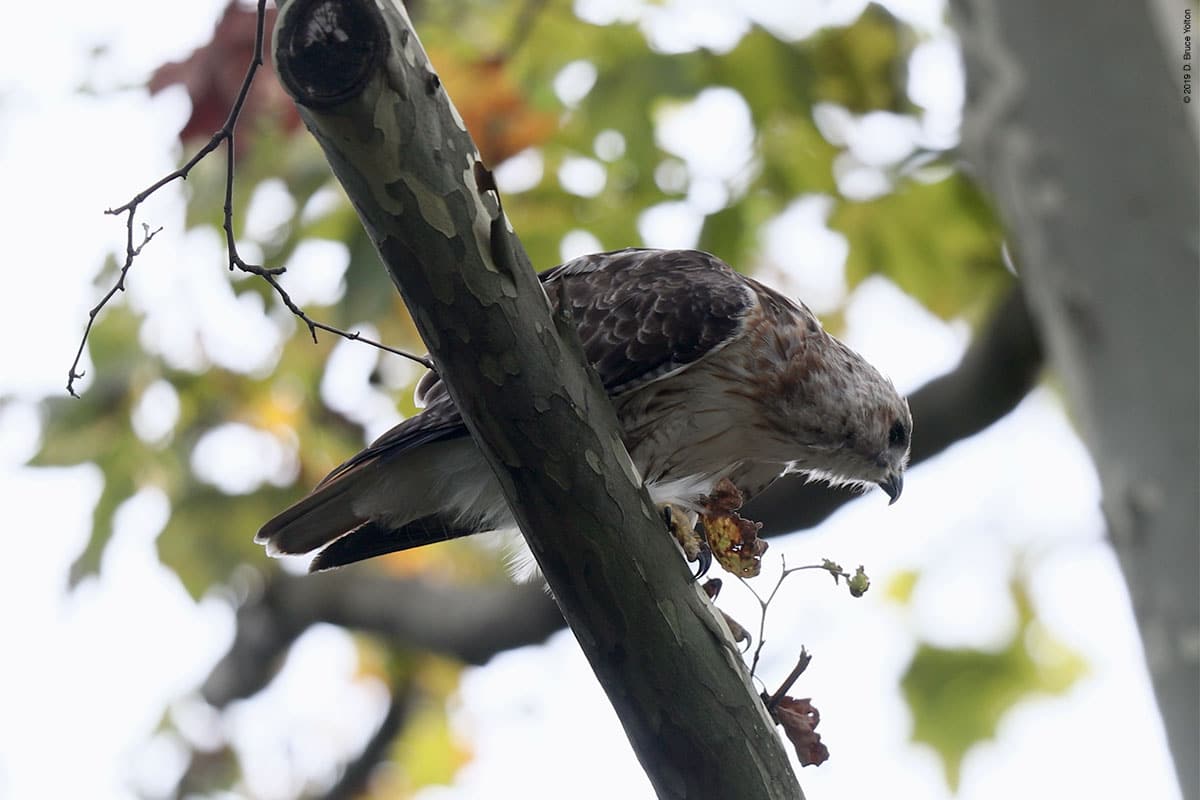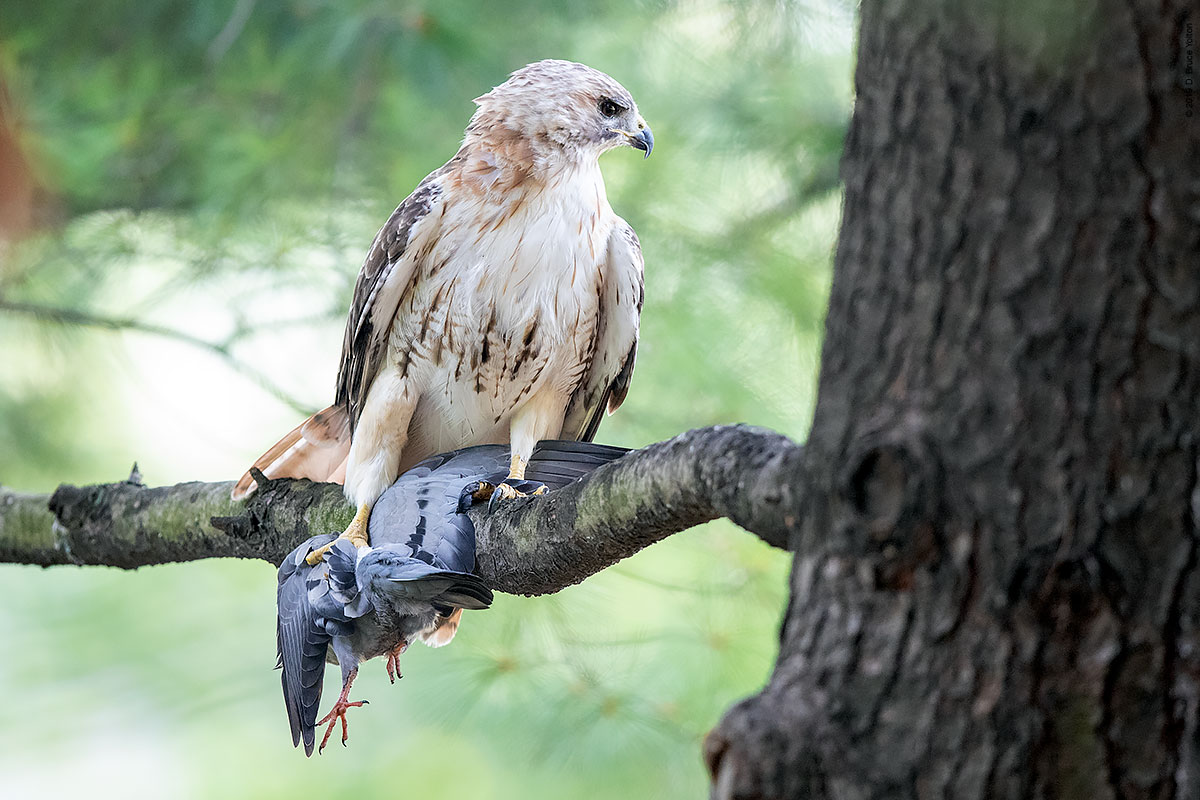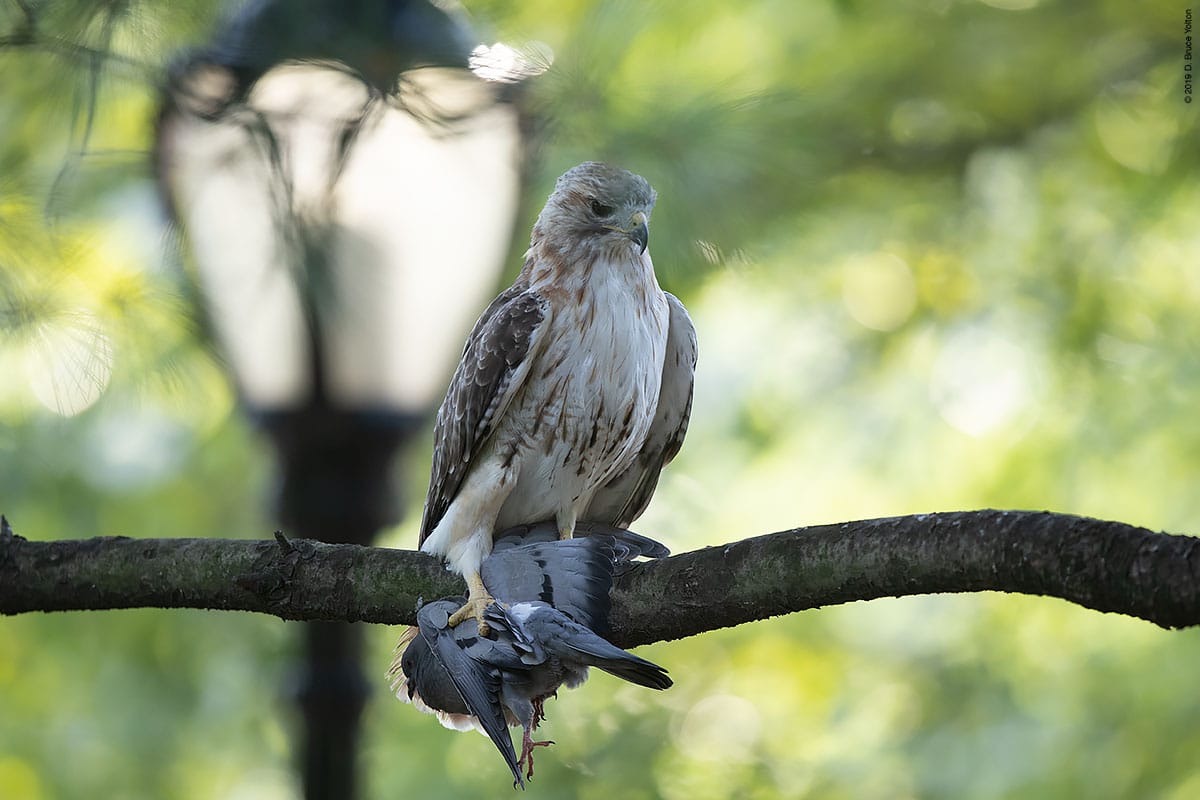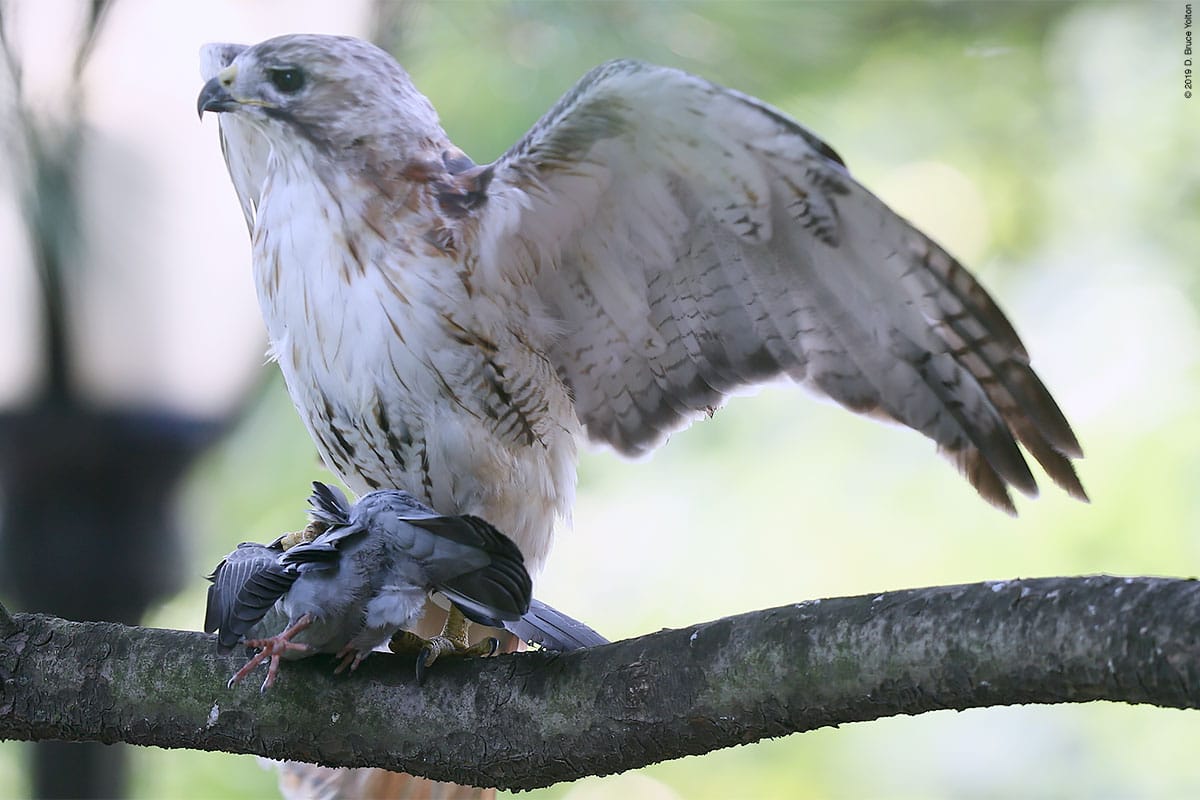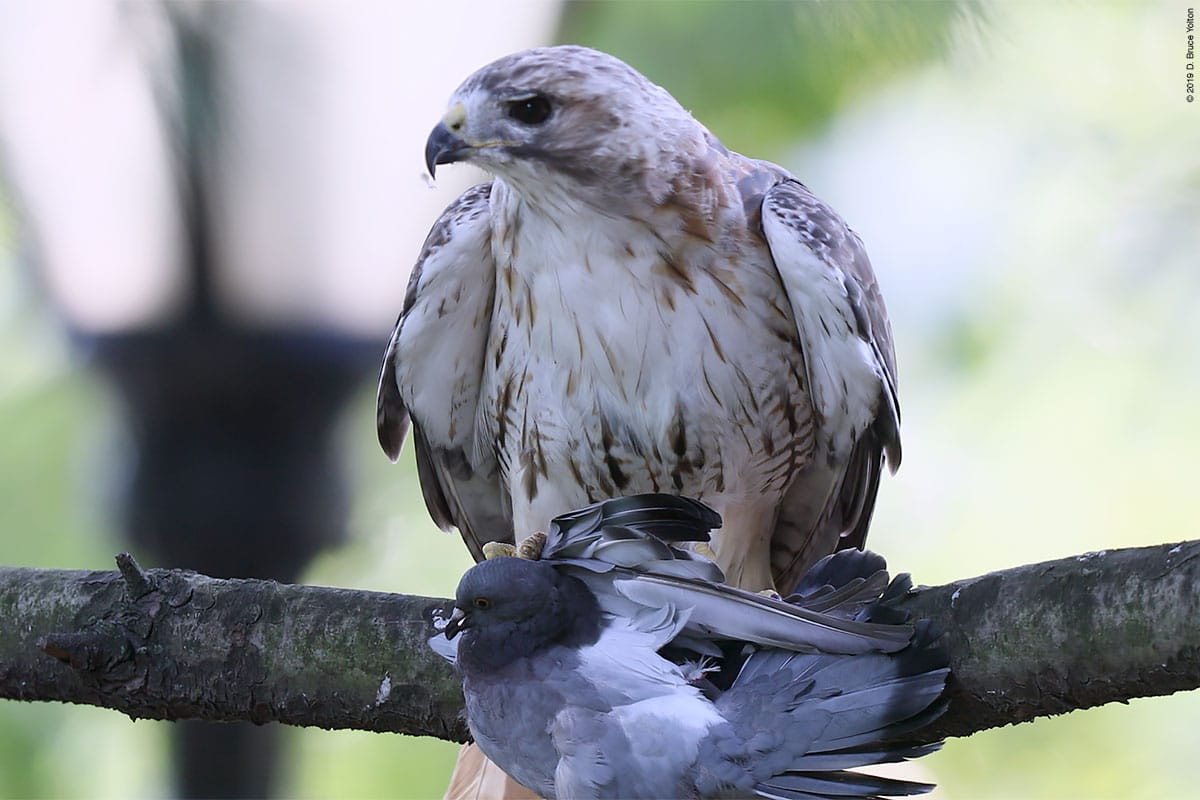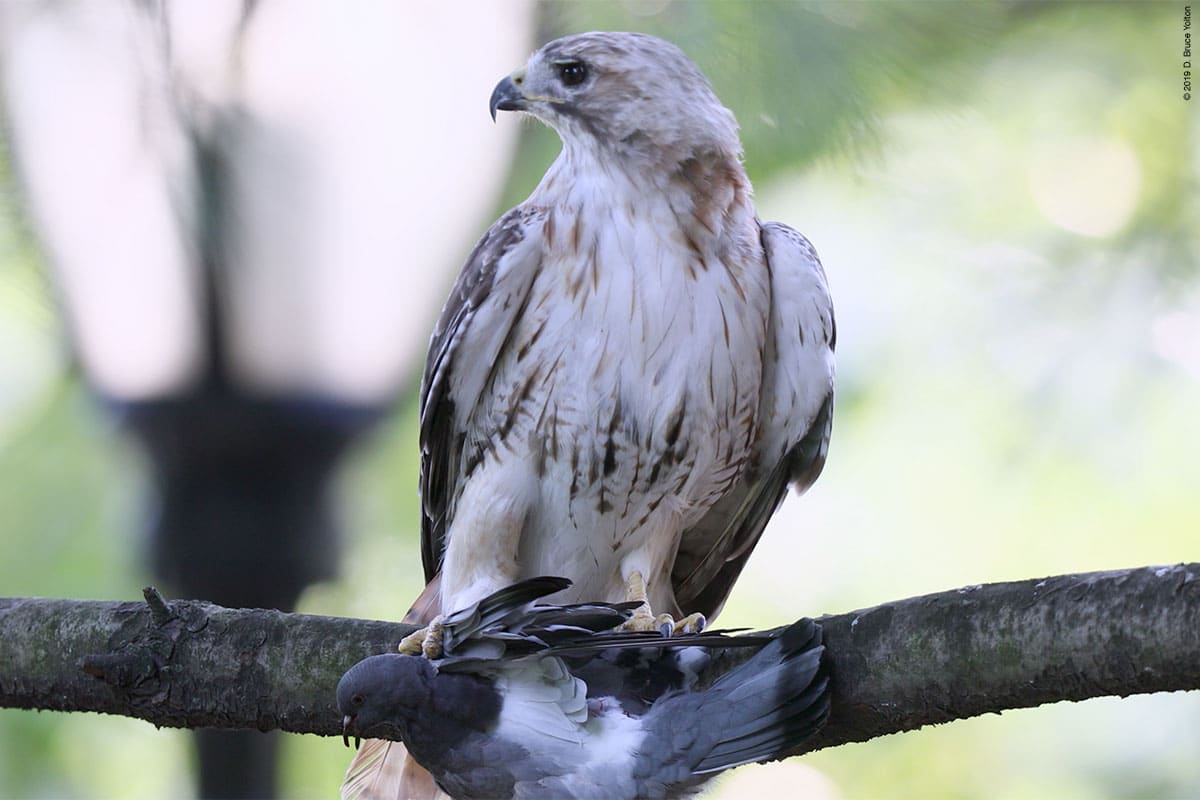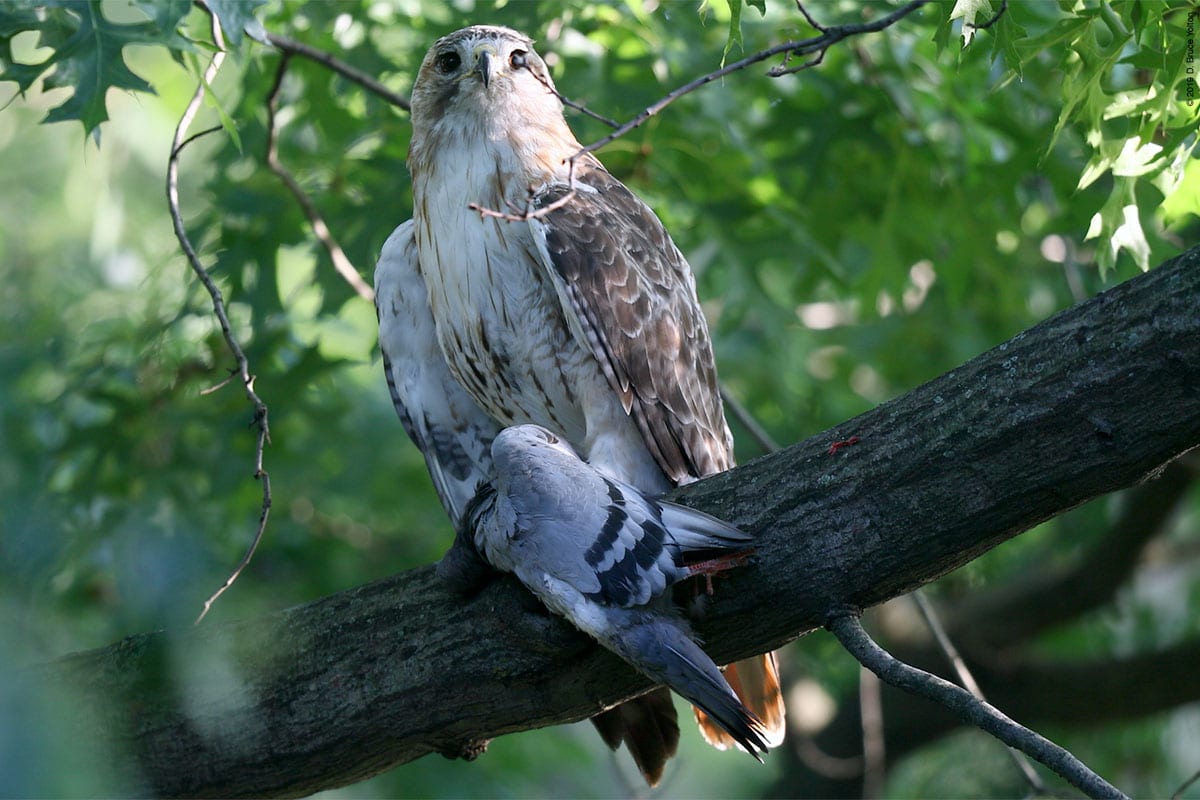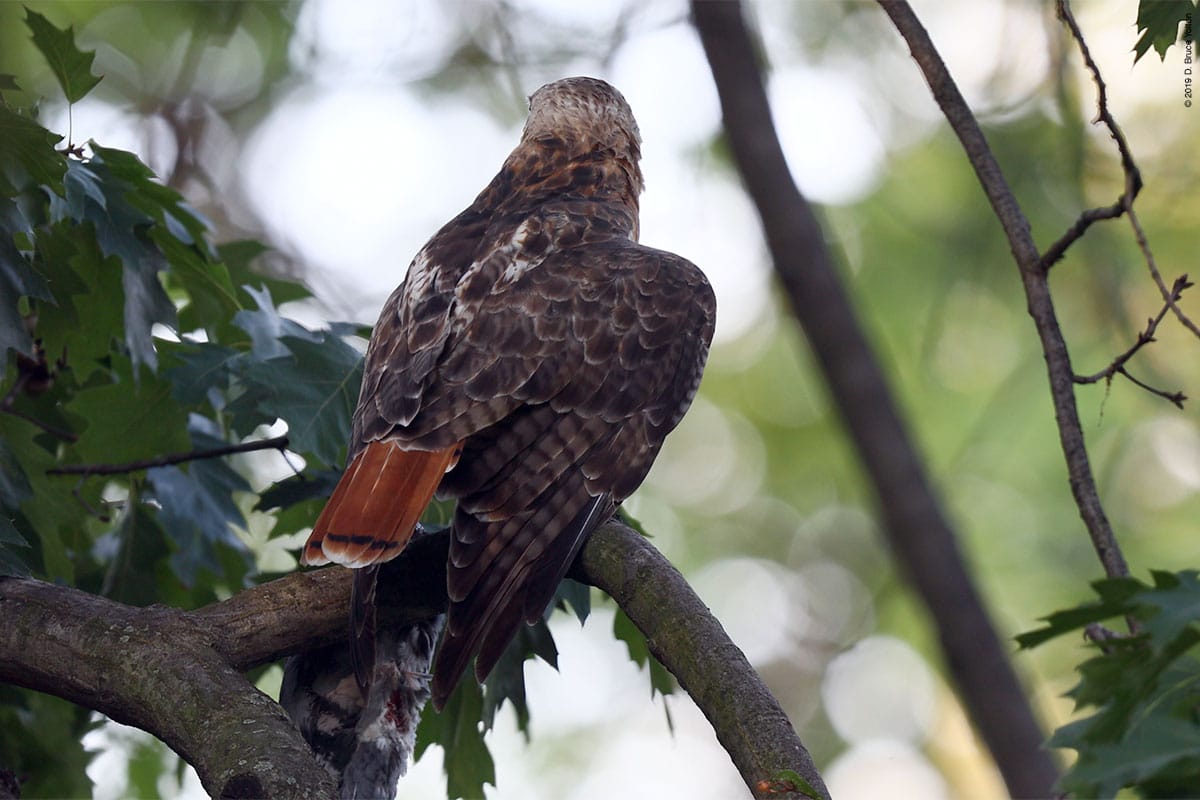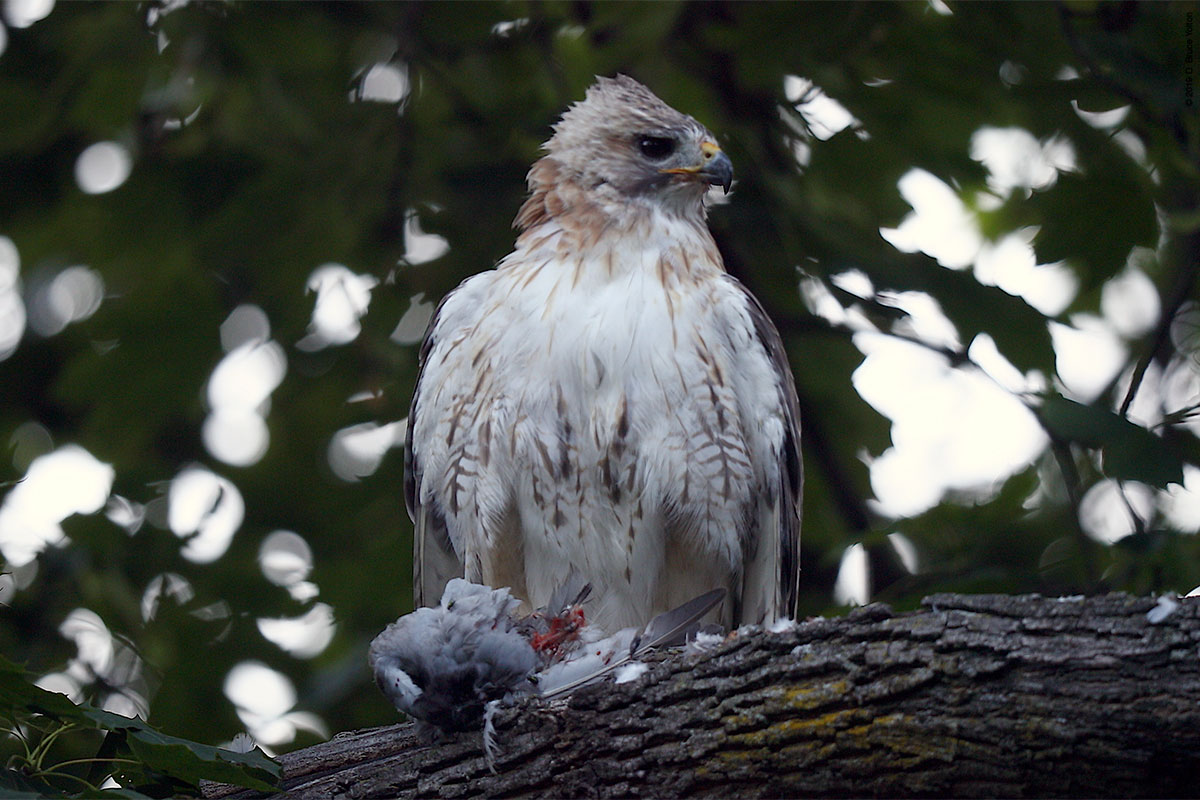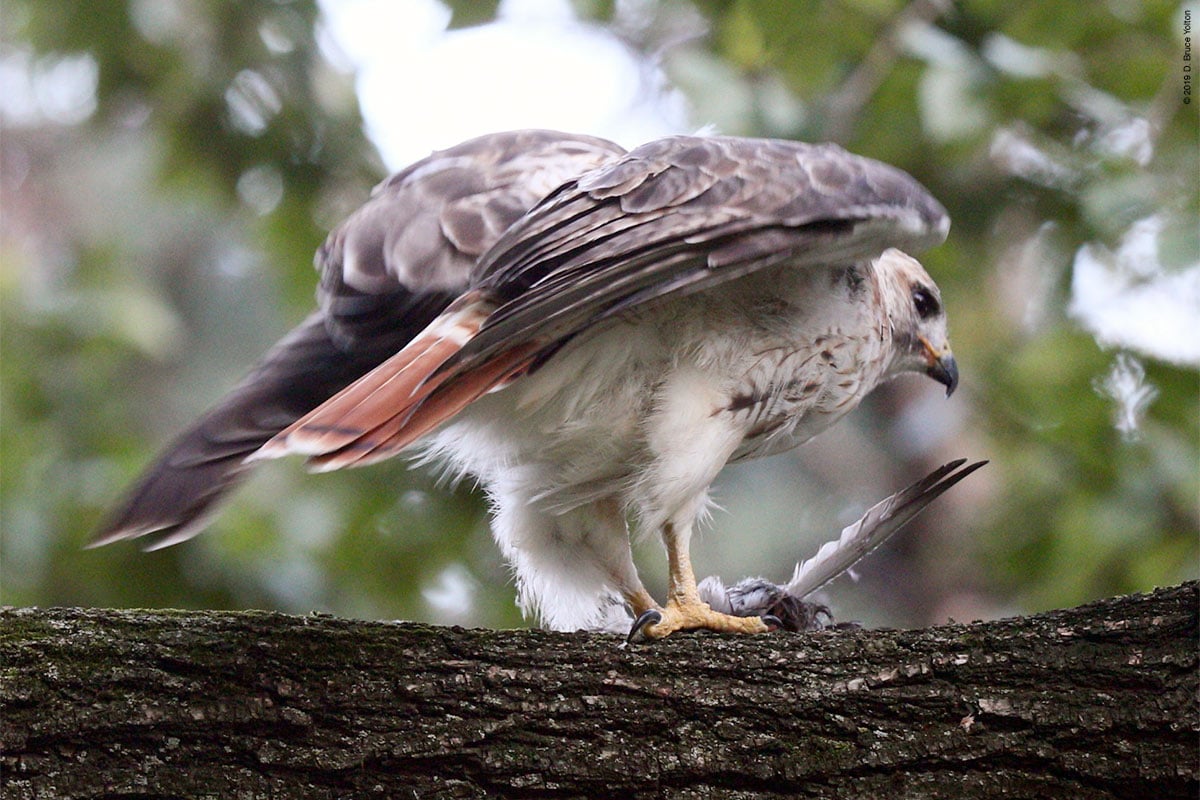This evening I was lucky enough to find Pale Male and watch him explore the East Pinetum of Central Park. He caught a pigeon and after a few flights, ended up eating it for about 3o minutes before being interrupted by an aggressive Gray Squirrel, which forced him to move to another tree.
(There are some pompous and misogynistic birders on Twitter and Facebook who have recently decided to immediately respond to the posting of any photograph or video of Pale Male, especially those taken by a women, with comments like “It can’t still be Pale Male, it must be one of his offspring.”
The comments are based on the belief that a Red-tailed hawk can’t be older than around 30 years. However, the statements offer no proof that Pale Male has been replaced by another hawk, and generally have a tone that implies that the female photographer isn’t a “real birder”, but a “hawk watcher inclined to anthropomorphize”. While many hawk nests go through numerous changes of mates, generally unnoticed by observers, for the 14 years I’ve watched Pale Male he remains the same bird with exactly the same habits and perches.
I missed his early days in the park. There are only a handful of birders who have followed Pale Male since he arrived in the park. I know most of them and they all are convinced Pale Male is still the original bird that arrived years ago.
I also find it incredible that these folks say that Pale Male might have be replaced by one of his offspring. Natal dispersal is incredibly far for Red-tailed Hawks, up to 1,000 miles. And what hawk is going to mate with its mother? When the time comes for 927 Fifth Avenue to get a new male, it won’t be one of Pale Male’s offspring. Anyone who thinks otherwise clearly doesn’t understand raptor biology.
So, if you really believe Pale Male is Pale Male II, offer some hard proof. Otherwise, don’t insult the many wonderful female photographers in the park every time they label a photograph of the adult male from the 927 Fifth Avenue nest, Pale Male.)


